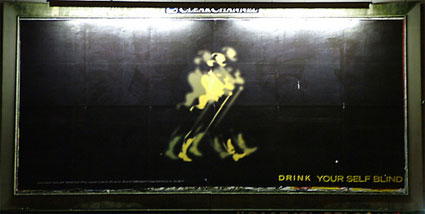Sunday, March 30, 2008
Wednesday, March 26, 2008
Why Optimism Matters
A great article at Worldchanging about the politics of pessimism and the need for optimistic sustainability thinking. "The politics of impossibility" as Alex puts it is:
1) An explicit statement that we are incapable of actually solving the planet's most pressing problems, and that to consider doing so is "unrealistic."
2) A mostly unstated assumption that the reason embracing bold solutions is unrealistic is because those solutions involve unbearable costs.
3) A rarely voiced belief that "realism" ought best to be defined as "in the interests of those doing well today," and that "unbearable costs" ought best to be defined as "any meaningful change in circumstances whatsoever."
4) A widely practiced stance that, therefore, expressions of concern and extremely modest, almost symbolic, small steps and half measures are the appropriate course of action.
Vs.
The politics of optimism:
1) That realism ought best to be defined as "within our capacity" and "necessary."
2) That we have the capacity to create and deploy solutions to the world's biggest problems, and the magnitude of the consequences of failure (both for ourselves and generations to come) demands that we act immediately.
3) That it is possible to act in such a way that the prospects of most people on the planet are improved. While certain costs will be incurred, the returns on those investments will be quite attractive, not only in ecological stability, international security and human well-being, but in terms of plain old economic prosperity. These solutions will make the future better than the present for the almost everyone, and greatly improve the lots of our children and grandchildren.
4) Therefore, defining our win scenarios, imagining the kind of future we want to create, describing the solutions that will make building that future possible, and publicly committing ourselves to success are the appropriate course of action.
The article is well worth a read.Labels: Politics, Sustainability, Worldchanging
Monday, March 24, 2008
Exposing What is Hidden, BLF Rocks

I'm a really big fan of The Billboard Liberation Front who, like Reverend Billy, use culture jamming to challenge the supremacy of consumerism to dictate our physical and social landscape. By making minor alterations to billboard the BLF
Expose(s) what is hidden. Some advertisers are too shy about what they really mean, BLF will help them make their message clearer. Case in point: the 2005 improvement of Johnny Walker where "Drink responsibly" became "Drink yourself blind".
Check out the piece about their talk at the Vooruit over at We-make-money-not-art.
Labels: We-make-money-not-art
The Next Flight, Green or White?

A new article from Worldchanging about how demographic shifts are leading people back into urban cores, what will happen with all the suburbia that now exist, and the green implications of a US population concentrated in cities.
(Picture Credit:www.theatlantic.com)
Labels: Sustainability, Urban Planning, Worldchanging
Thursday, March 06, 2008
On The Mind

Some stuff I’ve been checking out
The Happy City: Paris goes happy, and discovers interacting with people (even strangers, even just enough not to collide while walking down the street) makes people happy.
SAN FRANCISCO IN 2108? - The Hydro-Net Vision of the Future: A plan to transform San Fran (yeah I said it) into the Ecotopia we all knew it could be. Really pretty pictures.
Sk-interfaces (Part 1): Sounds like a really interesting exhibit in Liverpool. Immolation, which explores the US’ use of incendiary weapons (think fire bombs) on civilians, through both the macro (landscape) level and the micro (cells of skin) level.
Labels: Inhabitat, Sustainability, Urban Planning, We-make-money-not-art
Saturday, March 01, 2008
Oysters To Be Used To New York Waterways

An interesting article from The New York Times about an experimental project to use oyster beds to help purify Hendrix Creek, in the Brooklyn.
Scientists in the last several decades have developed a better understanding of the ability of oysters to filter water. As an adult oyster feeds, it can filter 5 to 50 gallons of water a day, depending on its size and the temperature of the water.
During this process, it absorbs nitrogen, algae and bacteria, depositing them in the sediment at the water’s bottom. The oyster beds also serve as the foundation for an ecosystem that can support other marine species, like eelgrass, which in turn absorb other waste materials and provide habitats for fish.
Labels: Sustainability, The New York Time

